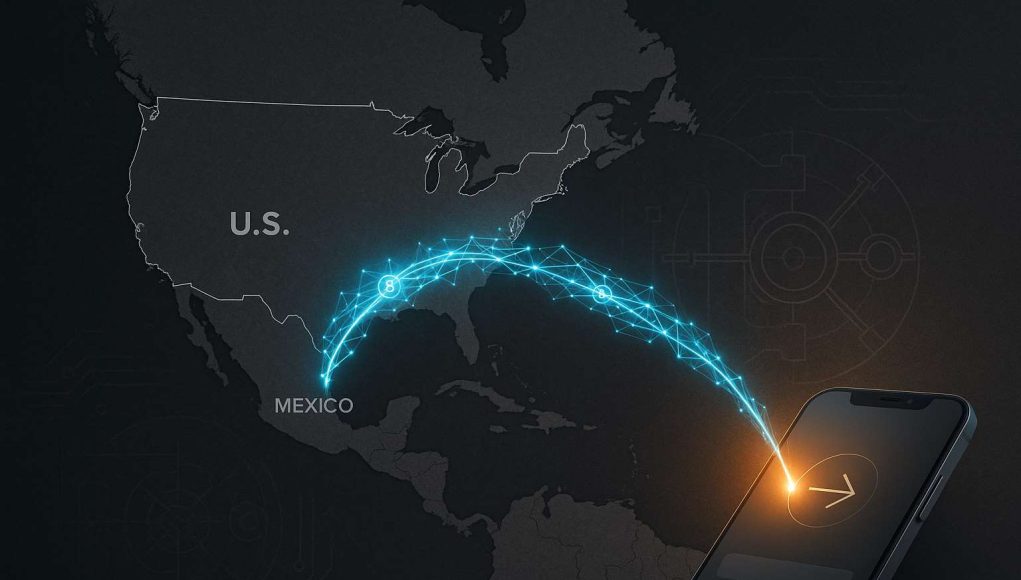SoFi has broken new ground by becoming the first U.S. bank to use Bitcoin’s Lightning Network for remittances. In partnership with Lightspark, the digital finance company is launching blockchain-enabled cross-border payments, starting with the busy U.S.–Mexico corridor. The launch is a major step forward in banking innovation and directly challenges the dominance of legacy remittance providers, like Western Union and SWIFT.
Why this matters for banking
For years, most banks have viewed blockchain technology from a distance, testing it only in limited pilots or research initiatives. SoFi is now moving beyond experimentation to live deployment. Through the SoFi Lightspark partnership, the bank is embedding Lightning payments into its infrastructure, making it the first regulated U.S. institution to process U.S. bank Bitcoin payments at scale.
This signals a turning point. Unlike fintech startups that build new rails outside the banking system, SoFi shows that U.S. banks can deliver Bitcoin payments under a regulatory framework, combining blockchain efficiency with established compliance standards. The SoFi Lightspark partnership illustrates how banks can collaborate with specialized firms to modernize their payments stack.
The initial focus: U.S.–Mexico remittances
The first use case is one of the most important in the world: the U.S.–Mexico remittance corridor. In 2024, migrant workers sent nearly $60 billion back to Mexico, according to World Bank data. That figure makes it one of the largest cross-border remittance flows globally.
For customers, however, the process is costly and often frustrating. Transfers through money-transfer operators can cost up to 6–8% of the amount sent. Settlement can take several days, and recipients may face long lines or additional fees at pick-up locations.
By integrating Lightning, SoFi aims to cut these pain points in cross-border payments. With Bitcoin remittances to Mexico, customers could see faster settlement, reduced costs, and greater transparency, all while using a familiar banking interface rather than a separate crypto wallet. If successful, SoFi could set a new standard for pricing and speed in the corridor through these Bitcoin remittances.
How Lightning Network changes the equation
The Lightning Network is a scaling layer built on Bitcoin. It allows payments to be routed “off-chain” through a mesh of payment channels before final settlement on the Bitcoin blockchain. For banks, this means they can achieve near-instant payments with negligible fees, while still benefiting from the security and transparency of Bitcoin’s base layer.
SoFi is branding this integration as part of the SoFi Lightning Network rollout, wrapping Lightning’s technical speed with bank-grade compliance and customer support. For users, the experience will look like a standard transfer. Behind the scenes, Lightning routes the payment in seconds, cutting out intermediaries and reducing operational costs.
This also strengthens the case for broader adoption of Bitcoin Lightning. By having a regulated bank commit to the technology, Lightning is moving from a tool of crypto-native companies to an essential component of mainstream financial infrastructure.
The challenge to legacy remittance systems
Entrenched players long dominated the global remittance industry. Western Union, MoneyGram, and networks like SWIFT have built worldwide coverage, but the cost structure is heavy. Every transfer typically passes through several intermediaries, banks, payment processors, and local agents, each taking a fee.
That model leaves plenty of room for disruption. By transferring money on a blockchain, SoFi can bypass several layers of this chain, reducing costs for both senders and receivers. If SoFi consistently delivers instant settlement and competitive pricing, it could force incumbents to adjust.
- Legacy networks: 1–3 days, 4–8% cost.
- Lightning-enabled transfers: seconds, fractions of a cent in network fees (plus banking markup).
For an industry handling more than $600 billion annually, the implications are enormous. SoFi is effectively testing whether a bank can achieve the same reach as remittance giants but with lower friction. If SoFi Bitcoin remittances gain traction, that shift could ripple across global markets.
Banking innovation meets crypto adoption
SoFi’s entry into Lightning is important not just for its customers but for the industry at large. As a regulated bank, SoFi operates under U.S. federal banking rules. Its rollout proves that blockchain-based transfers can be implemented without discarding compliance requirements like KYC, AML checks, and consumer disclosures.
This contrasts with crypto-native startups, which often face regulatory pushback. With SoFi’s international remittances moving onto Bitcoin rails, the message to the market is that digital assets can evolve from speculative instruments into financial infrastructure.
For Bitcoin advocates, it is a validation of the Lightning Network. Each successful integration like this expands liquidity and routing capacity, further accelerating Bitcoin Lightning adoption across both fintech and banking sectors. If SoFi’s new international payments succeed in Mexico, additional corridors could follow.
Challenges and open questions
- Scalability: Can Lightning handle the high volume of global corridors beyond Mexico without congestion?
- Regulation: Will U.S. and international regulators require new rules for banks routing payments over open blockchain networks?
- Consumer trust: Will everyday customers trust Lightning-based transfers when legacy remittance brands are deeply entrenched in communities worldwide?
SoFi will also face competition from both fintech startups already using blockchain and traditional providers who may accelerate modernization if threatened.
>>> Read more: Ripple Rail Acquisition: $200M Boost for RLUSD Stablecoin
With its Lightspark partnership, SoFi has placed itself at the center of a potential remittance shake-up. Cross-border transactions with Bitcoin are no longer just a concept; they are a live product in one of the world’s busiest payment corridors. The SoFi Lightning Network integration is both a milestone in banking innovation and a direct challenge to legacy systems that have long dominated international transfers.
If the model succeeds, it could push other U.S. banks to follow, reshaping how global payments are handled and confirming that Bitcoin is not only an asset class but an essential part of tomorrow’s financial infrastructure. In that sense, SoFi’s international payments may become a blueprint for the next era of cross-border banking.
Readers’ frequently asked questions
Does the recipient need a Bitcoin wallet or a SoFi account?
No. SoFi says the app converts U.S. dollars to bitcoin in real time, routes the payment over Lightning, then converts it back to local currency and deposits it straight into the recipient’s bank account. The recipient doesn’t need a crypto wallet or the SoFi app.
When and where does this launch, and how do I access it?
The service will launch later this year, starting with Mexico, and expand to more countries in phases. It will be available 24/7 in the SoFi app for Checking & Savings members, with a waitlist open for early access.
How are fees and exchange rates shown? Will I be exposed to bitcoin volatility?
SoFi states total costs will be below the current national average and that both fees and the FX rate are shown upfront before you send. Because the USD→BTC→local currency conversions happen in real time, neither sender nor recipient holds bitcoin during the transfer, which minimizes price exposure.
What Is In It For You? Action items you might want to consider
Benchmark cost & speed vs. legacy providers
Price out the same $100–$500 transfer to Mexico via SoFi, Western Union, MoneyGram, and Wise. Compare all-in fees (including FX spread), quoted delivery time, weekend/holiday availability, and refund policies. Run a small live test at peak and off-peak hours to validate real settlement times and the end-to-end recipient experience.
Set up a pilot and an operational runbook
Join the waitlist, enable the feature in the SoFi app when available, and document a repeatable flow: onboarding/KYC, transfer limits, recipient onboarding, error handling, and reconciliation. Define success metrics (cost per $100 sent, median delivery time, failure rate) and a fallback path if a Lightning route fails.
Track corridor expansion, compliance, and APIs
Set alerts for new corridors beyond U.S.–Mexico, changes in fee schedules, and app updates. If you manage cross-border payouts, ask about business features: per-transfer/weekly limits, audit logs, recipient verification, and potential API access (via SoFi or Lightspark) for bulk disbursements.











[…] >>> Read more: SoFi First U.S. Bank Using Bitcoin Lightning for Remittances […]